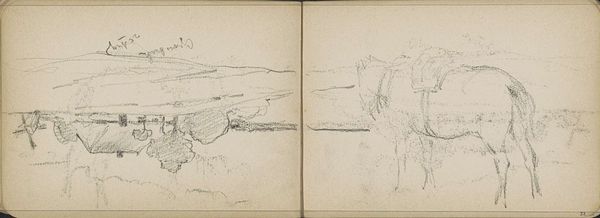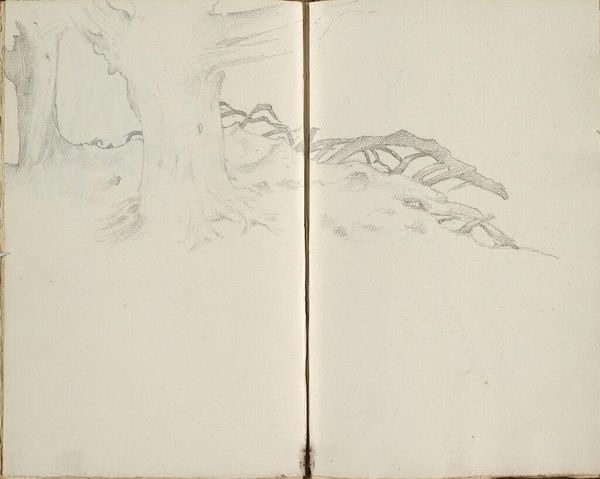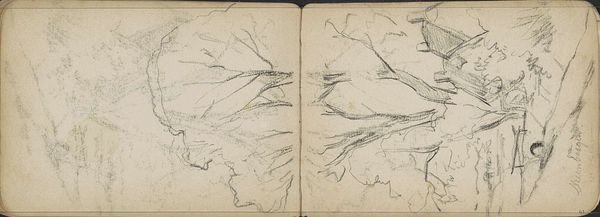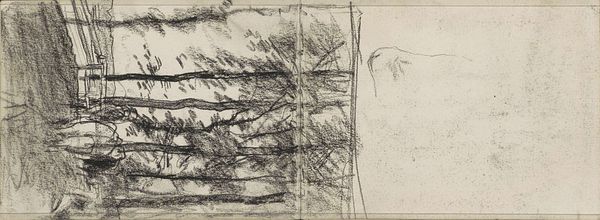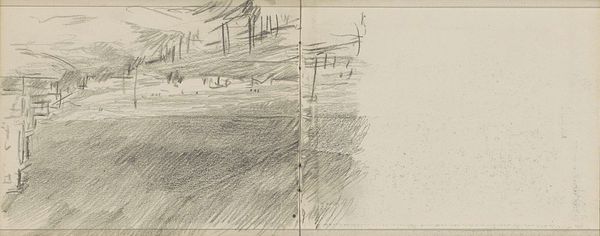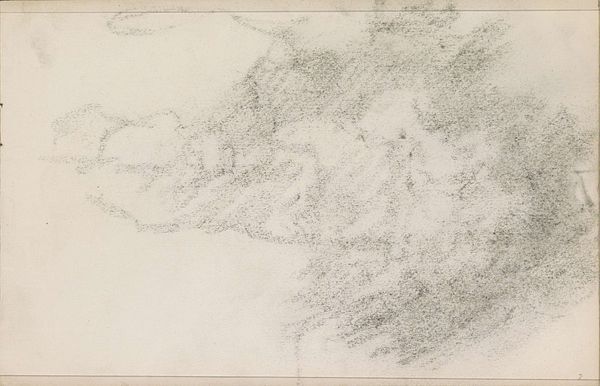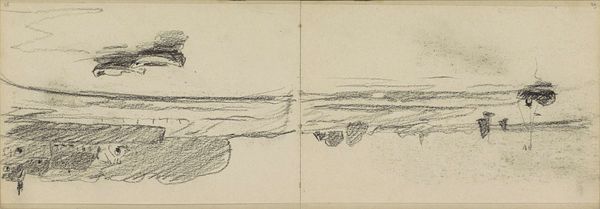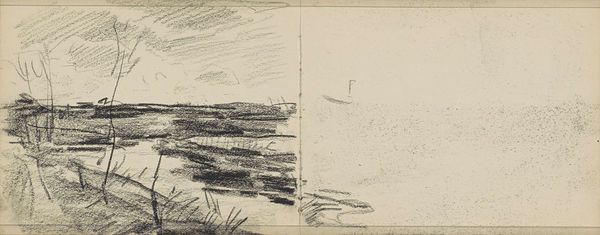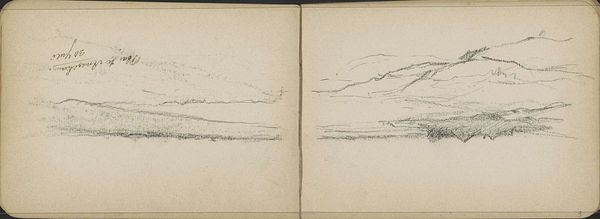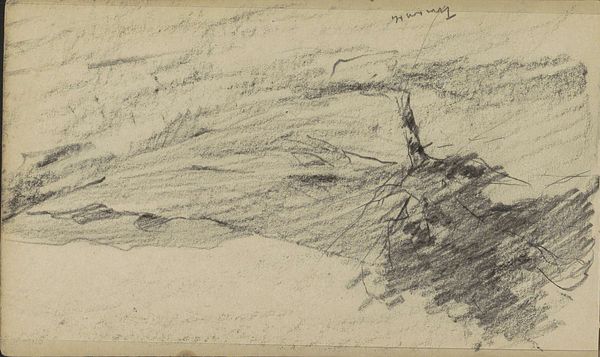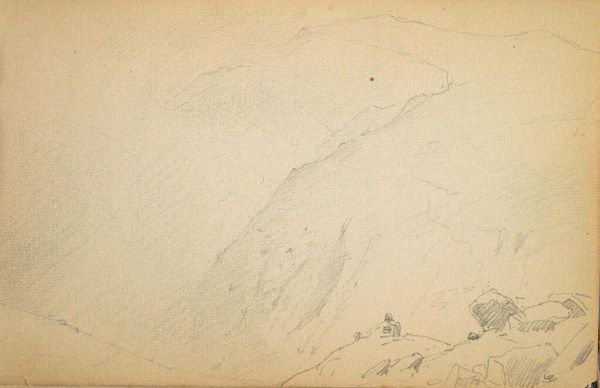
drawing, graphite
#
drawing
#
amateur sketch
#
light pencil work
#
pen sketch
#
landscape
#
personal sketchbook
#
ink drawing experimentation
#
pen-ink sketch
#
pen work
#
graphite
#
sketchbook drawing
#
sketchbook art
#
realism
#
initial sketch
Copyright: Rijks Museum: Open Domain
Editor: We're looking at Johan Antonie de Jonge's "Landschap, mogelijk een duinlandschap," or "Landscape, possibly a dune landscape," created sometime between 1881 and 1927 using graphite. The loose, energetic lines give it a very immediate, almost anxious feel. What do you see in this piece? Curator: I see a fascinating glimpse into artistic practice at the turn of the century. This sketchbook page, likely never intended for public display, offers insights into the artistic process outside formal exhibitions. Consider the context: increasing industrialization, urbanization. Artists were seeking authentic connections to nature, moving away from academic traditions. Do you notice how the quick, almost frantic lines might reflect a need to capture a fleeting moment, a disappearing landscape? Editor: That’s interesting. I hadn't thought about it as a reaction to industrialization. I just saw it as a quick sketch. Curator: Precisely! The "quick sketch" *is* the reaction. The very act of rapidly documenting this landscape –perhaps as urban sprawl encroached– becomes a statement. What is the cultural value of preserving nature? And for whom? Artists like De Jonge shaped perceptions and helped instigate public conversations about preservation. Also, I find myself wondering where this particular sketchbook drawing took place and by whom it was intended for? Editor: So, it's not just about the landscape itself, but about what the act of sketching it represents within the bigger picture of social change? Curator: Exactly. Art always operates within a socio-political landscape. Thinking about why and how an image is made unlocks a whole new dimension of meaning. This humble drawing gains unexpected resonance. Editor: I never thought a simple sketch could be so connected to broader social issues. It makes you wonder about all the unseen contexts behind artworks. Curator: Indeed! That constant questioning and contextualizing is crucial to truly understanding the power and relevance of art throughout history.
Comments
No comments
Be the first to comment and join the conversation on the ultimate creative platform.
